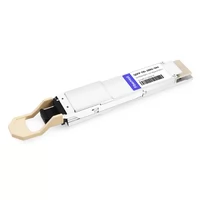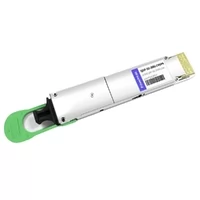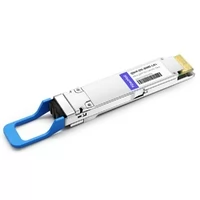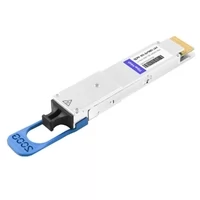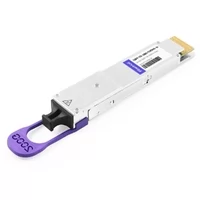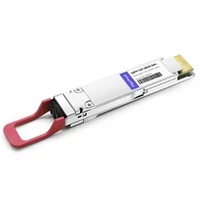Advancements in IT infrastructure have bolstered the pace and extent of digital transformation across industries today. This shift ushers the need for dedicated cloud-based applications with robust data transfer capabilities, and the advanced technology that these data centers provide is what is required. This blog will discuss the world of optical transceivers, which mainly includes the 200G QSFP-DD module. Understanding how this advanced technology increases data center interconnections and bandwidth hitches paints a picture of today’s network demands. With the increased pulse of traffic today’s modern networks are demanding, we will be diving into the core specifics of the 200G QSFP-DD to enhance our understanding of its advantages, potential applications, and more in data centers.
Table of Contents
ToggleWhat is 200G QSFP-DD, and How Does it Work?
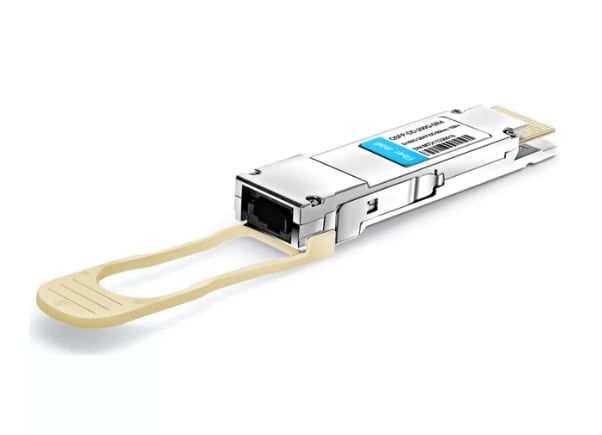
The 200-G QSFP-DD (Quad Small Form-factor Pluggable Double Density) has been developed to meet operational efficiency and transmit data rapidly on various networks. The passive optical module, the QSFP-DD, allows an Ethernet data link of up to 200 Gigabits, twice the data load capacity compared to the past QSFP modules. Its architecture comprises eight high-speed electrical and optical connections, each working at 25Gbps, which makes it cooperate with the 200G capacity targeted in the module’s construction. The module uses direct optical connections between data centers, reducing latency and increasing data transfer rate. The features, such as hot-swap compatibility and availability within existing frameworks, make the QSFP-DD a powerful solution to increase capacity and make networks more efficient.
Understanding the QSFP-DD Form Factor
The QSFP-DD interconnection type is a recognized advancement in high-speed optical transceivers designed with the expectations of a modern-day data network that demands increased bandwidth capacity. Enabling scaling-up solutions, the QSFP-DD device has a two-density interface that supports up to eight electrical lanes, each 25 Gbps and 50 Gbps, to configure up to 400G bit per second and more. This modular arrangement can increase port density in network switches and routers, thereby better-utilizing space and reducing system complexity amongst various other components contained in a data center. In addition, the backward compatible nature of the QSFP-DD with the other standard-sized QSFP ports provides users with an easy solution to upgrading older ports, integrating new ports, and meeting the increased traffic capacity requirements while avoiding the inconveniences of redesigning the network. Its advanced thermal management system and electromagnetic interference management set it apart in terms of reliability and operational efficiency in harsh network environments.
The Role of Optical Transceivers in Data Centers
Optical transceivers are crucial for high-speed communication in data centers as they functionally connect electrical signals with their optical counterparts, more so in 200G Ethernet configurations. Top sources position these devices as pivotal in global networks’ development as they fulfill modern demands for bandwidth, enabling quicker transmittance of data even over extremely long distances with minimal loss of signal strength. Current improvements emphasize their particular strengths in latency reduction, energy efficiency, and general performance in improving the overall architecture of the data center. Furthermore, optical transceivers help scale networks by offering cost-effective, modular interfaces that accommodate multiple transmission rates and communication protocols. These transceivers are necessary for global and regional networks, and their presence is essential as data and voice traffic increase.
Comparing 200G QSFP-DD with 100G and 400G Options
The 200G QSFP-DD bridges the low and the high-end markets, 100G and 400G, respectively. This means that data centers can now increase their data traffic without deploying expensive 400G infrastructure. The 100G system is economical; however, it will likely not be able to support the increase in the bandwidth future generations will require. On the contrary, 400G will be more compatible with advanced infrastructures, enabling greater energy output but at an expense. Finally, the 200G QSFP-DD will be the perfect economic middle market, allowing for gradual improvement to achieve the desired 100G performance without the enormous spending 400G would require. The design structure also allows minor incremental improvements that would suit a data center that wants phased enhancement.
How Do 200G QSFP-DD Cables Optimize Data Center Performance?
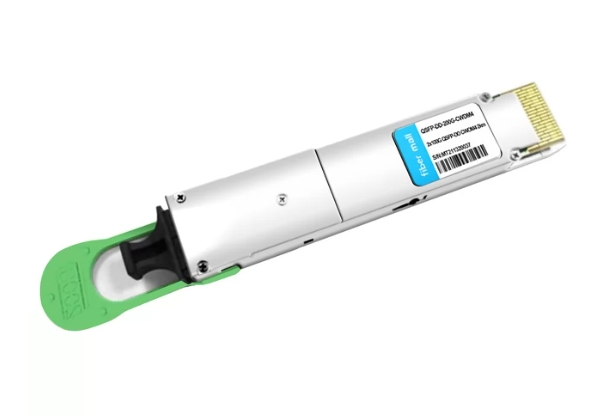
Exploring High Bandwidth Capabilities
The application of 200G QSFP-DD cables helps achieve high data rates and 100% Marketplace reload, thereby increasing the data center performance. These have eight differential pairs, greatly enhancing the data transmission density required for many bandwidth-hungry applications. Such a high bandwidth capability enables more efficient data processing and lower latency, which is critical for cloud and big data computing. With the support of multiple network protocols, 200G QSFP-DD cables are suited for future data centers. Also, they meet the requirements of changing trends in data centers, thus enabling them to stay relevant and efficient with the increasing demand for data.
The Importance of Port Density in Modern Data Centers
While maximizing performance and efficiently utilizing space is crucial in modern data centers, port density becomes indispensable. More room–port density enables more connections to be integrated into the same physical space without accumulating further infrastructure and additional expansion costs. This is made possible by using high-volume cabling, such as the 200G QSFP-DD, which promotes compact networking structures. Higher port density ensures better scaling to meet the increasing demand for data with minimal configuration changes. Consequently, data centers can provide greater throughput, increase efficiency, and deliver future-ready connection solutions in a limited area. Such methodology is essential in meeting the rapid pace with which the digital and the intensity of operational data spheres grow.
Impact of 200G on High-Performance Computing
The emergence of 200G technology infrastructural aspects of high-performance computing (HPC) environments augments data communication performance metrics, which are critical for computing processes requiring high amounts of data flow. 200G is twice the capacity as the standard 100G, which compositely changes the communication rate and reduces slow lanes. This enhancement in communication technology has its effects on HPC systems in a way that an enormous amount of information can be transferred quite quickly, which is of utmost importance during the performance of complicated models, processing, and data extraction in a timely fashion. Furthermore, 200G technology enhances latency bandwidth and power over the network, aiding multiprocessor functions at the system level. Using the example of the evolution of HPC, the integration of 200G networks will ensure a full-oriented usage of computational resources to maximize performance and enable further growth of data-heavy applications.
What Are the Key Features of QSFP-DD Active Optical Cable (AOC) and Direct Attach Cable (DAC)?
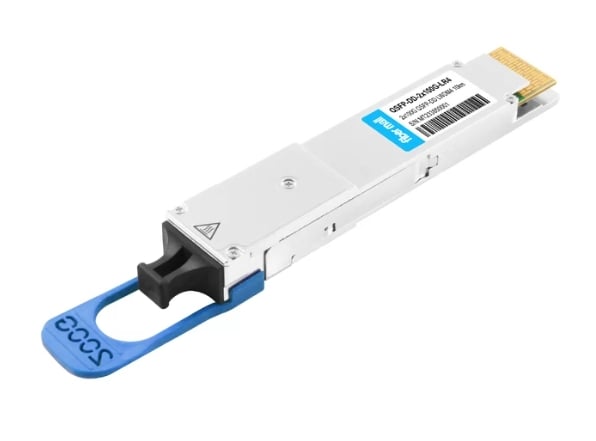
Advantages of QSFP-DD AOC for Long-Distance Transmission
In terms of data-centered features, AOC QSFP-DD has a great number of advantages for long-distance transmission requirements. One of the advantages is that this device allows for the transfer of high-speed data over long distances, which is possible thanks to the optical fiber structure, particularly when talking about 200G QSFP-DD to 2x. This technology has better reach than the mainstream copper alternatives and protects the data across long distances from getting corrupted or getting the signal weaker. Also, a QSFP-DD AOC consumes less power and has low electromagnetic emissions, thus improving a system’s performance in large deployment scenarios. At the same time, the device’s design is uncomplicated, helping with the installation and scalability of the network, thus providing people with a speedy way to upgrade and expand without much interference. Such features made it possible to use Amphenol connectors with the QSFP-DD AOC for any complex and large network requiring high transfer rates in different types of networks.
When to Use Passive Copper Cables with QSFP-DD
Passive copper cables are ideal to use when there is a need for cheap connectivity and high density, but only over short distances. In particular, their use can be recommended for intra- or inter-rack wiring in data centers because of their compact construction and low power requirements. These cables are a viable and cost-effective alternative for places where the span is within the conventional crossover range, which is approximately 5 to 7 meters. Moreover, passive copper cables feature low latency and ease of installation, thus rendering them suitable for high-performance computing clusters and other similar applications where power-efficient and high bandwidth connections are required in limited spaces.
How Direct Attach Solutions Benefit Data Centers
Direct Attach Solutions provides the coppers and the active optical cables, which are very useful to the data centers. These cables provide low latency, which is very important to aid speed connections and make data input and output rates efficient. These solutions also reduce the level of cable clutter, which, as a result, minimizes haphazardness and promotes the flow of air, which is vital for improving cooling systems. DAC and AOC cables are also affordable since they can be adjusted according to the requirements of a particular data center. Moreover, as plug-and-play devices, they are easy to install and maintain, reducing the period when a service is not operational, especially during the installation of new components or the expansion of existing ones. These benefits combined help in enhancing the efficiency of the center and the effectiveness of the overall tasks.
How Do 200G QSFP-DD Modules Support Efficient Interconnects?
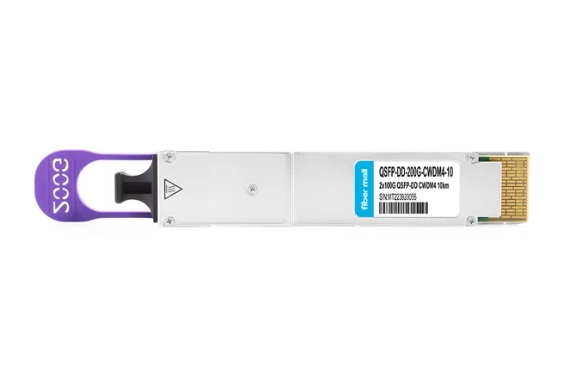
Integrating 200G QSFP-DD in Ethernet and Infiniband Networks
The globalization of computer networking over the last three decades and this growing dependence on communication and computing technologies has resulted in the continuous demand to improve the speed ratio of data communication and transmission, perhaps in the coming years, with breakthrough satellite networks that could reshape and revolutionize modern-day internet. Irrespective of this potential leap, there has been and will always be tremendous increases in the amount of data that needs to be processed by computers and networks, and this will surely motivate the new architecture and designs of future networks and computer systems, as the integration of 200G QSFP-DD modules in Ethernet and Infiniband networks does streamline interconnect options to enhance the overall performance of the circuits and devices. These Modules have been designed to improve the data rates and Bandwidth, which indicate that large-scale data transfers would be processed at lower latencies. The 200g qsfp-dd te connectivity has easy interconnect sensitivity and high internal bandwidth, resulting in higher-density ethernet configuration networks. Infiniband networks provide advanced signal integrity sharing, and owing to the redesign, there is increased port density, which is sufficient for better throughput and data transfer. Data centers, therefore, will be able to leverage the potential of these modules and boost their performance metrics to address the demands and standards of the modern infrastructural network.
The Role of QSFP-DD Transceivers in Fiber Optic Infrastructure
QSFP-DD transceivers are significant components in the fiber optic architecture because they allow the communication of high-density and high-speed data, which is necessary for the current network processes. These transceivers accommodate several applications with large bandwidth requirements – for example, 200G Ethernet enabling void-free data transmission, which is critical for optimal network performance. QSFP-DD transceivers promote the growth of network deployment strategies that need more bandwidth through increased rates. Also, they are able to function with other fiber optic systems, which makes them suitable for different topologies and vital in modern data centers aiming to improve their structure and interconnectivity.
Understanding PAM4 and NRZ Modulation Technologies
Title: PAM4 and NRZ Modulation Techniques: Their Efficiencies and Trade-Offs Pulse Amplitude Modulation 4-Level (PAM4) and Non-Return-to-Zero (NRZ) are techniques that serve the purpose of encoding information into signals so that they can be converted into data format during transmission at high speeds. NRZ uses two amplitude levels for data representation, whereas PAM4 employs four. Today’s fast-paced and high-throughput networks require increased bandwidth, and PAM4 relatively does that, but the costs of such practices are a decreased signal-to-noise ratio (SNR) and more excellent noise disturbance. Whereas NRZ may not require as many resources, NRZ is much easier to make and, as such, has a high SNR and is capable of withstanding more significant transmission disruptions. A deep appreciation of the trade-offs involved when using PAM4 and NRZ modulations is essential for network engineers to choose the proper modulation technique relevant to their networks and targets.
What are the Applications and Benefits of QSFP-DD to QSFP-DD Breakout Cables?
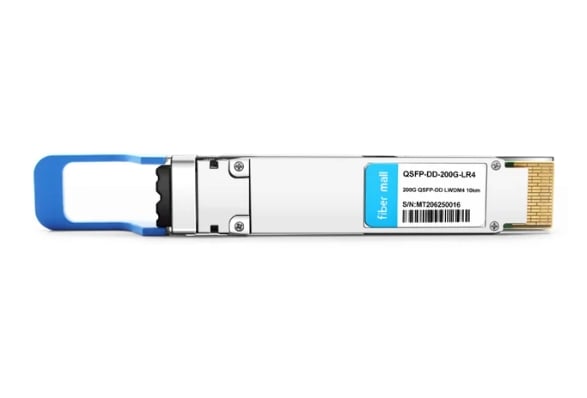
Enhancing Flexibility with Breakout Configurations
The breakout configuration, also known in this standard as scaling out purpose in a QSFP-DD, makes absolute sense, specifically concerning data centers. The main reason why this is the case is because, in terms of their bandwidth requirements, data centers are very diverse and, as such, scale up operations without dealing with complex network hardware modifications. This means that the breakout cables enable data centers to save costs, manage resources optimally, and grow their network capacities to suit current requirements while ensuring better performance is also delivered.
Case Studies: Data Center Efficiency Improvements
Data center owners have gradually embraced using QSFP-DD to QSFP-DD breakout cables to boost effectiveness. A poignant example is of a large enterprise with multiple integrations of breakout configurations that could handle changes in data traffic better. Using these cables enabled the enterprise to maximize its port usage with consequent savings on spending by the economy in the need to acquire more equipment. The adaptable configurations also permitted adjustment of bandwidth distribution during peak periods to enhance throughput. Such a case simplified network operations and gave the corporation a potential platform for expansion, as technological changes would require such capabilities.
Future Trends in QSFP-DD Technology
With the increases in demand for data transfer speeds from the backbone of advanced telecommunications systems, it would not be wrong to state that remarkable developments are expected from the QSFP-DD technology. Future developments predict an evolution towards higher bandwidths with throughput capabilities reaching as high as 800 Gbps. Innovations in photonic integration and new signal-processing techniques will contribute to this acceleration. Furthermore, QSFP-DD modules are forecasted to follow energy use trends through designs targeting more green data centers. There are expectations for applying Artificial Intelligence and machine learning to replace human intelligence for real-time performance enhancement in intelligent traffic management. Such advancements will again underline that QSFP-DD will be central for the next-gen data center architectures, especially for 200G QSFP-DD to 2x solutions.
Reference Sources
Frequently Asked Questions (FAQ)
Q: What is the difference between a QSFP56 and a QSFP-DD regarding their use in 200G Systems?
A: Both the QSFP56 and the QSFP-DD are standards used for the 200G systems, though they bear certain differences. The QSFP56 is a variant of the conventional QSFP 200G based on 4x50G lanes. The QSFP-DD, on the other hand (which stands for double Density), is a more modern design that offers twice the density of QSFP56, having 8x25G lanes to achieve 200G. In addition, these modules tend to be more variant with the spec as they can easily upgrade to 400g. This is feasible since the interfaces are backward and compatible with qsfps.
Q: How do 200G QSFP56 transceivers differ from 100G QSFP28 modules?
A: 200G using the sec with SFP. This is with the 2010g with Lalu 100 qsp28modles wrap-around lagging. It is important because the high-bandwidth demand is satisfied with the technologies, so interconnected data center possibilities have increased And more speeding data applications. It is important to note that while the 100g qsp28 uses 4x25g lanes, the 200g sig uses alongside aps four wo 50g lanes. This gap is further widened as 200q is significantly longer. Most 100 keep coming in varieties, driving up costs and other models.
Q: What are the designs and specifications of the 200G QSFP-DD optical module in terms of reach?
A: There are different reach capabilities for 200G QSFP-DD optical modules. The most common are: 1. PSM4 (Parallel Single Mode) for up to 500m over a single stand 200G optical broadband fiber passes through a multimode fiber. 2. SR8 (Short Reach) multimode fiber provides up to 100m range. 3. Alongside these features, 200 Gb/s QSFP- DD optical modules also support exciting 4. LR4 (Long Reach) allows data transmission across distances of up to 10 kilometers through a single-mode fiber, and FR4 (Four-channel LAN-WDM) extends the reach to as far as 2 kilometers. These ranges may differ with the manufacturer, the model, and the technology used for the interconnect.
Q: Are DAC (Direct Attach Copper) cables compatible with 200G QSFP-DD?
A: A DAC solution is available for the 200G-ZR optic modules. Such cables include the twinax cable, also called passive direct attach copper, which is best suited for short distances across a rack or two. 200G-ZR Direct Attach Copper Cables come in different lengths, and the most popular ones range from 0.5m to 3m with an addition of 1m to the list. Since these are built for short distances and high data speeds, they come in handy in environment-rich data centers.
Q: What information can we find in the datasheet of a 200 G QSFP-DD transceiver?
A: In the case of a 200G QSFP-DD transceiver, the features of importance in a data sheet include: 1. Compliance with Multi-Source Standards (MSA) agreement 2. Supported data rates/protocols (e.g., 200GbE) 3. 545 Wavelength specifications 4. Power and temperature characteristics 5. 4 Transmission distance capabilities 6. Connector type (e.g., MPO or duplex LC) 7. Operating environment temperature range 8. Supported data center switches of a specific model 9. Built-in diagnostic and monitor features 10. Uses of specific types of optical interconnect technologies (e.g., SR8, PSM4, FR4).
Q: In what ways do 200G AOC Cable Assemblies differ from the traditional transceivers?
A: Compared to conventional transceivers, 200G AOC cables offer certain advantages; for example, AOC has built fiber optic cables, which do away with the requirement for individual transceivers and fiber patch cords. In terms of installation, they provide a simple solution as they are plug-and-play. Regarding insertion loss, AOCs are more effective and offer better signal integrity. Another difference is that they come in multiple dimensions, commonly between one meter and one hundred meters. There is also a difference in costs in that AOCs are cheaper over shorter distances than transceiver and fiber combinations. Regardless of the distance, data can be transmitted at high speeds through the AOC cables, and connectivity can be enabled through QSFP-DD ports found on data center switches.
Q: What are the persuasive benefits of using 200G QSFP-DD transceivers in the application of data centers?
A: The advantages of utilizing 200G QSFP-DD transceivers while applying them in data centers include the following: 1. They have increased throughput and a larger bandwidth 2—better space utilization within the same rack due to increased port density 3. Cost savings gained from energy efficiency while scaling with the increase of connected systems using fewer connections like 25G and 50G, which significantly helps the usage of 200GQSFP-DD. There is a 400G capacity on standby that ensures needed upgrades can easily accommodate the futuristic needs of networks such out there. 5. Lower-speed QSFP modules can also communicate with the device for smooth compatibility 6. The device has different reach and optically integrated connectors that can be utilized 7. The physical connection complexities between people operating in different regional branches are reduced. This is especially useful when dealing with huge data centers 8. Sending and receiving data packets means lower latencies for even the most rigid of applications. 9. It meets the set requirements and specifications within the industry, making it operable with other industries and companies 10. Large scale usages such as cloud computing and big data computing are able to be taken up.
Related Products:
-
 QSFP-DD-200G-SR4 2x 100G QSFP-DD SR4 850nm 70m/100m OM3/OM4 MTP/MPO-16 MMF Optical Transceiver Module
$350.00
QSFP-DD-200G-SR4 2x 100G QSFP-DD SR4 850nm 70m/100m OM3/OM4 MTP/MPO-16 MMF Optical Transceiver Module
$350.00
-
 QSFP-DD-200G-CWDM4 2X100G QSFP-DD CWDM4 2km CS SMF Optical Transceiver Module
$1100.00
QSFP-DD-200G-CWDM4 2X100G QSFP-DD CWDM4 2km CS SMF Optical Transceiver Module
$1100.00
-
 QSFP-DD-200G-LR4 200G QSFP-DD LR4 PAM4 LWDM4 10km LC SMF FEC Optical Transceiver Module
$1000.00
QSFP-DD-200G-LR4 200G QSFP-DD LR4 PAM4 LWDM4 10km LC SMF FEC Optical Transceiver Module
$1000.00
-
 Juniper QDD-2X100G-LR4 Compatible 2x100GBASE-LR4 QSFP-DD LWDM4 10km Duplex CS SMF Optical Transceiver Module
$1300.00
Juniper QDD-2X100G-LR4 Compatible 2x100GBASE-LR4 QSFP-DD LWDM4 10km Duplex CS SMF Optical Transceiver Module
$1300.00
-
 QSFP-DD-200G-CWDM4-10 2X100G QSFP-DD CWDM4 10km Dual CS SMF Optical Transceiver Module
$1300.00
QSFP-DD-200G-CWDM4-10 2X100G QSFP-DD CWDM4 10km Dual CS SMF Optical Transceiver Module
$1300.00
-
 QSFP-DD-200G-ER4 200G QSFP-DD ER4 PAM4 LWDM4 40km LC SMF FEC Optical Transceiver Module
$1500.00
QSFP-DD-200G-ER4 200G QSFP-DD ER4 PAM4 LWDM4 40km LC SMF FEC Optical Transceiver Module
$1500.00

